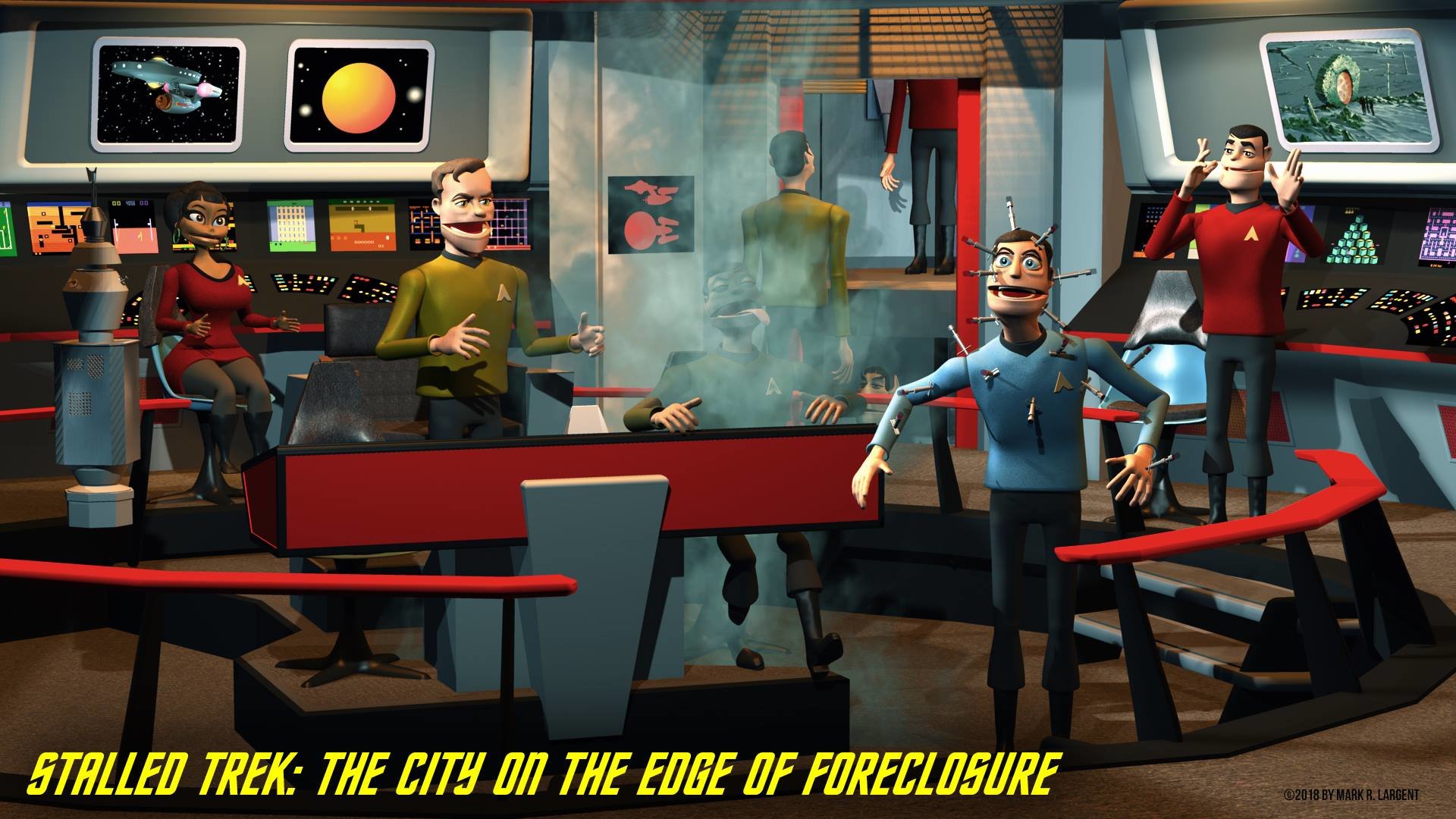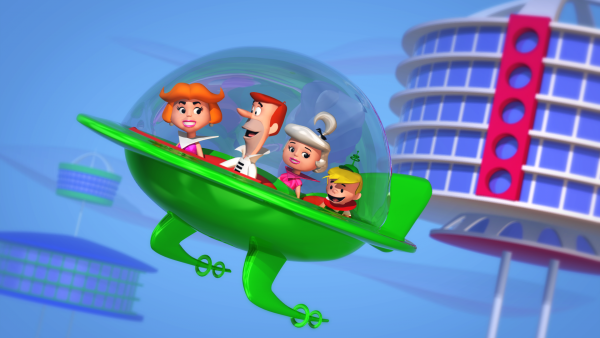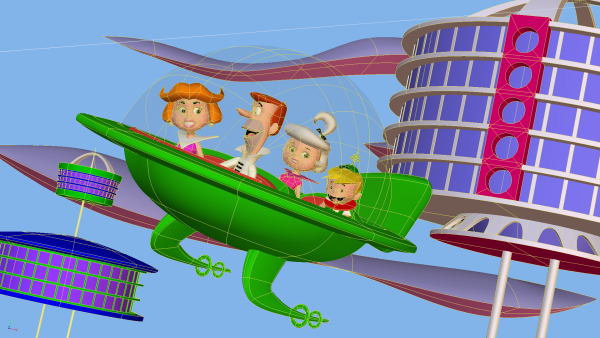-
Posts
3,827 -
Joined
-
Last visited
-
Days Won
31
Content Type
Profiles
Forums
Events
Everything posted by largento
-
Awesome! Thanks! I finally mailed out the last of the DVDs last Friday. Boy, what a relief to get that finished.
-
Thanks, guys! Let's hope it does the trick and gets me a job! Rodney, I'm already uncomfortable with that phrase. If I were to use it, it would be unbelievably arrogant.
-
That's very cool, Matt! I'm already wanting to spend money I don't have on a complete set of Wannabe Pirates figurines. :-)
-
I'm working on an online portfolio and the advice I'm getting is to eschew the normal structure and not have regular menus, so I've decided to have a street with a row of buildings that represent different areas of my portfolio. Obviously, a theatre would be the best place to have animation stuff for my portfolio, so it's the first building. I see some places where the AI filter didn't do a good job with filling in some letters, so I'll have to go back and rework those. I'm going to wait until I have everything done before I start putting textures on the models. Next building is a comics shop.
-
I have ideas and would love to do one, but right now my primary focus is on finding employment. I jumped off that train five years ago and I'm finding it really difficult to find a way to jump back on it. Hopefully, that will work itself out soon and then maybe I'll have the free time to approach it.
-
No details yet, but the official Star Wars website has announced the awards for Star Wars Fan Films is returning next year. Wikipedia has a page about past contests, rules and winners.
-
One thing I noticed is the art design for the color palettes That's a talent I'd like to have.
-
I like the look they've achieved. Simple, stylish and appealing. Show You Care
-
At the least, I would think it would be a good idea to try to supplement your animation video with additional content: "history of Tar", "Art of Tar", "Tar from 2D to 3D", etc. These could be only a couple of minutes or so long, but they'd greatly increase the amount of Tar content that's out there and you could link to all of them in every video. The impression I'm getting from content providers now is that people are less interested in owning physical copies of things. People have become accustomed to getting their content digitally and they want it to be free. Great for the audience, bad for the creators. I'm gestating on all of this in preparation for whatever it is I'm going to do next and I'm realizing that it's going to have to be a combination of elements: a website with regular content, YouTube ads, Patreon and maybe even the odd Kickstarter.
-
There's a YouTube video you should watch (if you haven't already) called "Does Independent Animation Have a Future on YouTube?" It discusses the algorithms that YouTube uses to determine premium content. Where it used to be that the number of views was the most important thing, it's now switched to a combination of minutes watched and frequency of uploads. Making your video longer doesn't work, because it affects audience retention and doesn't increase watch time. You have to upload more content. He says the magic number is 10 minutes of regular content. YouTube says they did this to make it more about the quality of the videos, but it really rewards quantity over quality. The other half is that it rewards "sessions." So, if your video links to another video that keeps the user on YouTube longer, it counts in your favor. Just having your one video every six months or so, means obscurity and no rewards. It mentions an issue that came up a couple of years ago, where a YouTuber known as "Reply Girl" was making $15,000 a month from her YouTube channel that was made up entirely of her posting replies to other people's videos. She did as many as five a day and apparently capitalized on her female attributes, by featuring them prominently in the videos and video preview image. This gave her lots of clicks and any activity on her account was counted as helpful to her numbers, even the negative ones. She said that her haters were her biggest help. This guy apparently manages to stay going because he's part of an animation channel called "Game Grumps" that amazingly produces 30 minutes of animation a day!
-
Rodney, that's kind of my point. That's the value of something like Kickstarter or Patreon. The mechanisms are already in place and the selection process is democratic. Taking Patreon, for example. One person (or a small group) could set up a Patreon to do tutorial videos. At levels of support, patrons could be offered individual training. They might not be able to pay hundreds of dollars, but what if it were at the $5 or $10 a month level? If the Patreon managed to reach a certain level, it's worthwhile for them. The Patreon is also pushed along by this to produce new content each month, which benefits everyone with an interest in what they are doing.
-
Some sort of A:M Foundation that could grant financial support to A:M-specific projects and education? I would think you would undoubtedly need to lean heavily on sponsors. Preferably big ones. What corporations or companies would have an interest in sponsoring A:M? How could you demonstrate to them that supporting an A:M Foundation would benefit their company or the general welfare? I could see some of the goals of such a Foundation being: 1) Providing subscriptions to schools that can't afford it. 2) Creating/maintaining/distributing educational materials (video tutorials, A:M assets) in support of schools teaching with A:M 3) Raising awareness of A:M in the general community 4) Fostering creativity by hosting a student film festival 5) Sponsoring A:M User Groups 6) Supporting and maintaining A:M development Chief to any success with this would be making the credible argument that learning and using A:M fosters creativity in students and offers them some way of bettering their lives. An argument would have to be crafted and supported by some kind of data. Anecdotally, there are cases of people learning on A:M and then going on to work at large studios. That's useful, but an A:M Foundation would need statistical data in support of this. Assuming this could all be made to happen, there would have to be someone(s) who would represent an A:M Foundation who could knock on all the doors and make all the calls to sell the idea to potential sponsors. Assuming that meets with success, it would be quite a time-consuming venture and I would think there'd be some kind of board that would need to be in place to decide where and to whom the grants should go.
-
It would help to know what the problem is.
-
I gave in and put Windows 8 on my computer last year, running in Parallels. Although I still find myself mostly using the Mac version, I did a whole lot of the work on The Wobbling Dead on the Windows' version. It is more stable under Windows. What I like about running it with Parallels is that I almost never see Windows. The application launches as if it were just another application and I don't have to have a separate shared folder to share files. I can open a file with either version and make changes and save. I'd imagine that it would run faster if I did Bootcamp, but then I'd have to restart my computer just so I could run one app and then have to restart when I went back to any of my other ones. That said, I haven't thought of the Windows version as running slow at all under Parallels.
-
Not sure what you're asking, Rodney? Are you wanting to discuss funding options besides crowd-funding? Getting a company to sponsor your project is probably doable if you're a good salesman. I think there'd have to be some level to where they felt that it would benefit them, though. It would also add a significant obstacle to creative freedom. I gather grants are plentiful in other countries, but much harder to get in the US, but that's more of a sense rather than specific knowledge I have. In early radio and television, it was normal for a company to buy time and put on their own show that they sponsored. My understanding was that the company's advertising agency was the key player, since it was viewed as advertising. I thought that might be the case on the web, but I haven't really seen that happen with any real significance. Crowd-funding requires a crowd. :-) If you have your own audience of thousands, then you could probably just have a fundraiser and collect almost all of the money. Crowd-funding sites like Kickstarter offer to expose you to a crowd, but my experience is that if you don't have an audience going in, you won't suddenly be given one. Still, they handle the actual money collection and they only keep about 10%. I'm interested in Patreon, but haven't jumped into the water yet. I signed up in the first couple of weeks, but it's geared for ongoing projects, rather than individual ones. The idea is that patrons of yours agree to donate a small amount of money either on completion of a project or once a month. There are safeguards in place so that patrons can govern how much money they donate per month. It would really be perfect for a webcomic or something like that where you generate content on a regular basis. Not-so-much for lengthy projects. Here's what I've gotten from my Kickstarter experience. People today would rather support an artist than buy their work. Especially in the case of the work being mass-produced. For whatever reason, a band could run a Kickstarter and make enough to have a CD printed, only to find that less people would want to pay $15 for the CD than wanted to pay $25 or more to help the artist make it. The so-called Webcomics model for making money seems to be changing as they find that their audience no longer wants to purchase books, but still wants to support their favorite comics. It's also changing the big guns, too. Look at the number of high-profile Kickstarter projects coming from celebrities. Cases where studios wouldn't greenlight a movie, but the fans of the creators will. I've been paying attention to this large-scale Star Trek fan film project called "Axanar." Initially they were seeking $10K to do a short film and raised over $100K. This expanded budget allowed them to produce a very high quality film. Now they are working on a feature film and looking to raise $650K. They plan on doing it in stages. The current KS is for building sets (they have already surpassed their goal). The short film's release was surely timed to coincide with the launch of this new KS, acting as a brilliant marketing device.
-

Considering Freelancing - What Should I Know? Also advice welcome!
largento replied to Darkwing's topic in Open Forum
I know nothing of Canadian tax laws, so it would be a good idea to check up on them. In the US, there are some definite downsides to self-employment. I think the website is a necessity. What I would suggest doing is scowering the crowd-funding sites, looking for film projects that you think could use your services and then politely spamming them, letting them know your availability, abilities, and pricing. These projects are looking to raise money for services like yours. And I've done three Kickstarters and I'm still getting emails from people selling their services, so it must be working for people. :-) I would expect that success with those independent projects would give you the credentials to move up to bigger productions. -
I think it's important to take into account that there's work and there's art. If you're painting a house for somebody, then feedback is key. You need to know what the client wants and what is feasible and how many men it will take and what the timeline is and will the color fade and on and on. If you're creating a painting, then it's all about you and the canvas. Like Will described it, it's like birthing a baby. It's helpful to offer advice on changing diapers or how to hold the baby, but it isn't helpful to say that the baby is ugly. :-) In person, or to a degree in safer environments like this forum, most people are mindful of that, but in most cases on the web, with anonymity firmly in place, people completely ignore all the positives and just focus on every minute flaw they can find. The thing is, it's done! It's birthed! Warts and all, when the artist puts down his brush, this is what he created. I like some artist's work and I don't like some other artist's work. Neither are right or wrong. Animation is mostly viewed as the product of a factory, but when the animation is the vision and labor of an individual, it is going to have that individual's stamp on it. That's what I thought when the guy on CGTalk pointed you to a film clip. Like Will points out, that's how that film did it, there's no reason why Will's film should. We have been trained to see rapid cuts and closeups of action that are almost too quick to register what is being done, but that's a choice and a style. Doing it because that's what everyone else is doing isn't really a style or a choice.
-
Unfortunately, I find most criticism online ignores all that is good about what you've done and focuses only on what they perceive to be wrong ...which is often subjective or just because they have been trained to see something one way. I do my best to avoid criticism. :-) No matter how much value they believe their opinion has, I'm the only person who has thought every thought, made every decision frame-to-frame through the whole piece. They may *think* they know what's wrong with a piece, but only *I* know every tiny flaw and imperfection by heart and I know that I made the decision to let them go because I'm not an entire army of people in a studio and I want to finish the project before I grow old. :-) We all have our own style, aesthetic and rhythm. Stay true to yours.
-
Yeah, that's a nice tease, having him approaching that settlement. The music was really great, too. It adds to the sense of mystery. I'm not sure how to get the word out (I struggle with that on my own stuff), but the word needs to get out!
-
I'm excited to see your dream finally realized, Will! I think that's why many of us come to Animation:Master. And it really came out great! Bravo!
-

Attention Sci-Fi Image contest entrants!
largento replied to robcat2075's topic in Contests/Challenges
Fill out your info quickly, these dock guys are making my neighbors nervous... :-) -
It was done very similar to how stop-motion was done at the time. The figures and diorama were created, posed, lit and photographed. Instead of using a 3D camera, they took two still shots. This allowed them better control over the final stereo image. They could adjust the elements in the frame between the left and right shot to make things stand out more. I'm sure they could have provided a wealth of info to 3D filmmakers of today. I'm pretty sure they had teams of craftsmen working on them at their height and I would assume that would account for the disparity in quality. These images from Donald Duck and the Flying Saucer are awesome.
-
Thanks, guys! @Robert, no real thoughts on what the characters are thinking or doing. Originally, I'd intended that Jane would be seeing a floating sale sign and would be focused on that, but my early tests with it bombed. Out of necessity, the sale sign became a focal point and it took away from the characters, which was what I wanted to feature. So I dropped the idea of having a gag. The ViewMaster "look" was something I was consciously thinking about. I even briefly toyed with the idea of trying to submit a proposal to them to see if they would be interested in doing some new ones, but then I remembered we live in the 21st Century and all these characters are part of giant corporations looking to control their assets and brands to the point that they would never go for it. @detbear, I'm not a fan of heavily textured renditions of 2D characters, either. I prefer to interpret cartoon characters as being smooth and mostly solid colors. I love the idea of adding dimension to them, but not the idea of trying to make them more realistic in anyway. I guess I think of them more as toy versions. As to the look of the render, I did use depth of field and a light blue fog, which I thought helped make the buildings and clouds seem further away and not compete with the foreground. I don't normally use reflection, but did for the bubble top, which came out much better than I'd thought it would. I did render it with real AO (with transparency). I use the Porcelain material on most of the skins of my characters. I think it gives them a nice puffed out look. The lighting was 3-point and I have a 30% global lighting for the choreography that's set to a flesh color. To me, it warms up everything and it keeps the shadows from being too gray. I haven't quite figured out using shaders yet.
-
-

Image Contest SciFi Image Contest Winner
largento replied to Jason Simonds's topic in Contests/Challenges
Wow! Giant thanks to everyone! There was clearly some mighty competition. As my young nephew would say, "this calls for a happy dance!" :-)












